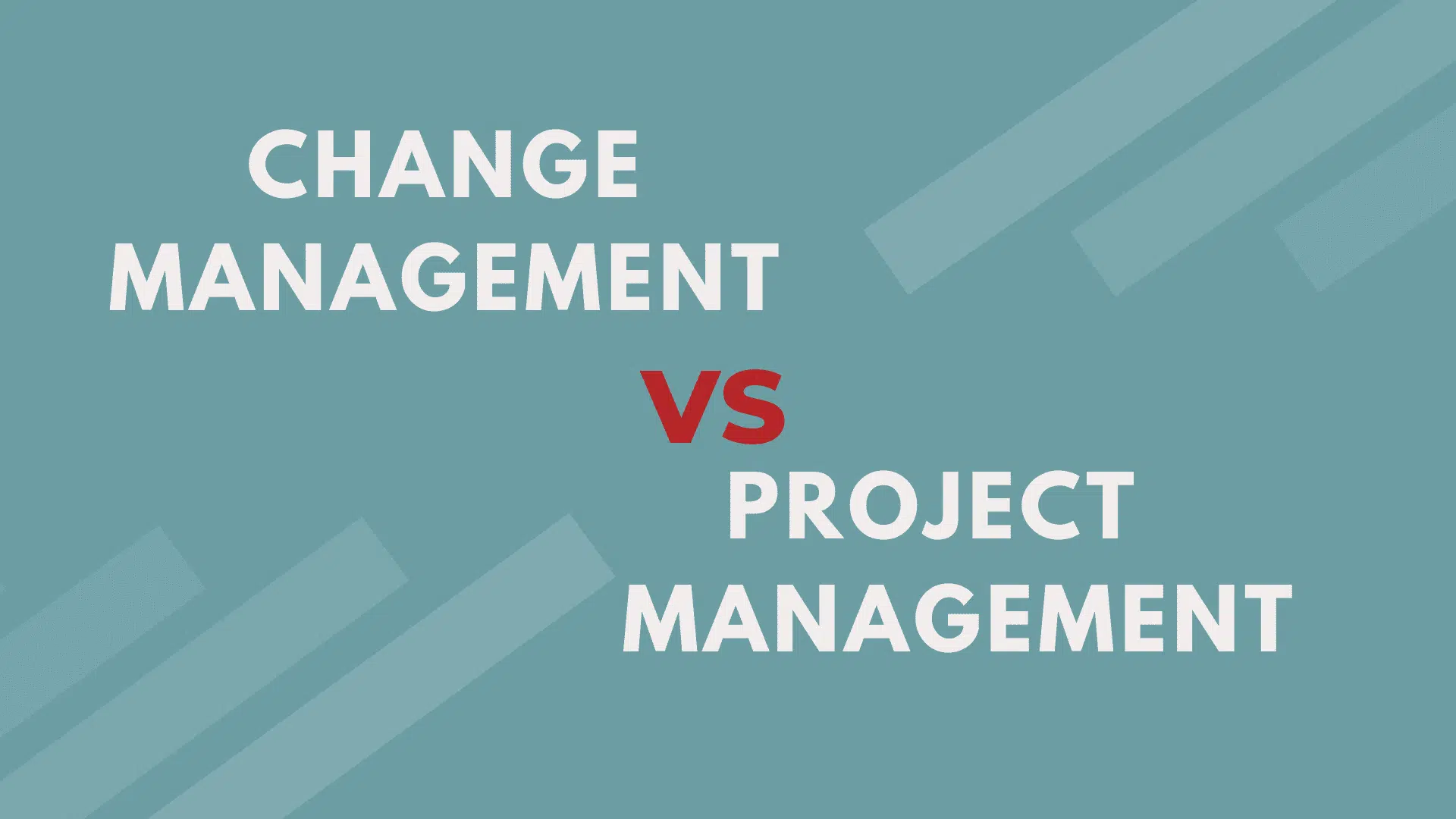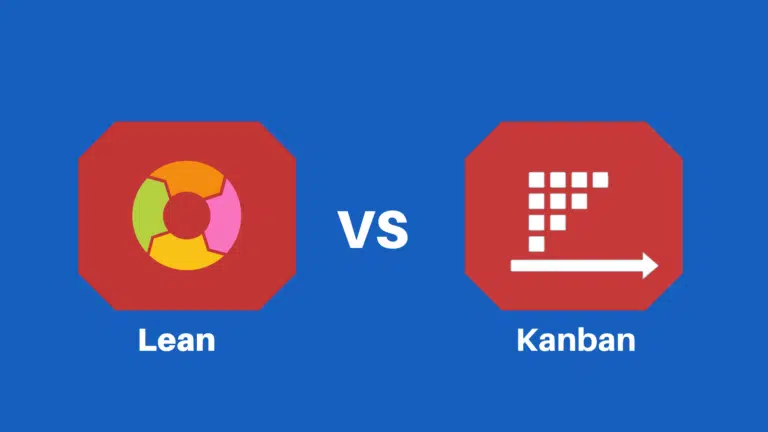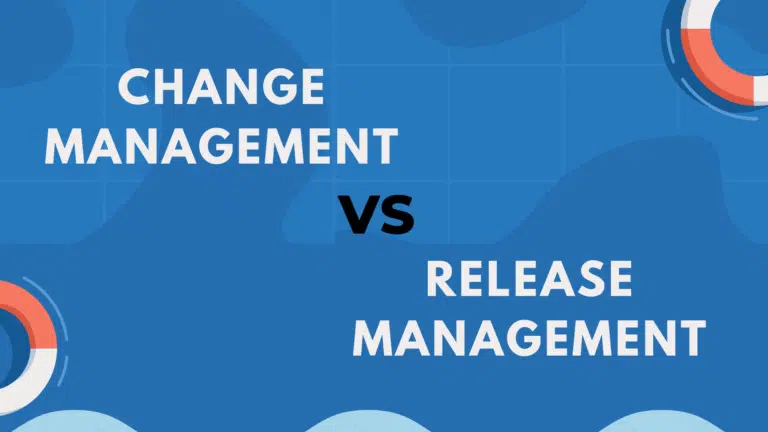Many professionals often get confused between change management and project management. Both processes are related and interconnected, so this confusion is expected.
Both frameworks have different goals, but the ultimate objectives are the same. Understanding change management vs project management is vital to complete the project successfully and manage successful organizational change.
What is Change Management?

The change management process is a structured approach to help businesses transition. This change can be because of changes in leadership or management, project initiatives, or any other major event affecting the organization.
Change management is primarily a reactive approach. Reactive change management is the approach of responding to changes and adapting to them.
Change management helps businesses and employees transition smoothly because the change supports the organization’s long-term business goals. It manages the human side of change within an organization and helps individuals, teams, and the organization successfully adapt to new processes, technologies, or structures.
Change Management Types
The change can be one of the following three types:
- Developmental Change Management: This occurs when management intends to optimize processes and procedures to improve efficiency. They can also update their business strategies to align with current market conditions and organizational goals.
- Transitional Change Management: This occurs when a business acquires a new business or merges with another business.
- Transformational Change Management: Often, a change in leadership causes a change in brand and operations, necessitating an update to business values, goals, and objectives.
“Change management” has a different meaning in the context of project management. In project management, the project manager handles changes in project baselines using change management or changes in product specifications using configuration management. In this situation, project managers receive change requests from key stakeholders, then review and process them using an integrated change management system.
Key Change Management Aspects
- Stakeholder Engagement: Change managers identify and engage stakeholders affected by the change. They understand their needs and involve them throughout the change process for a smooth transition.
- Change Impact Analysis: Change managers assess the impact of the change on individuals, teams, processes, and systems to identify bottlenecks, hindrances, risks, and resistance.
- Communication and Awareness: Change managers develop a communication plan to convey the reasons for the change, in addition to its benefits and expected outcomes. They create awareness, address concerns, and provide support and training programs to reduce the learning curve.
- Training and Skill Development: Change managers provide the necessary training and development opportunities to ensure employees have the knowledge and skills to adapt to the change successfully.
- Monitoring and Evaluation: Change managers continuously monitor the change’s progress, collect feedback, and make adjustments as needed. They evaluate the effectiveness of the change initiative and capture lessons learned for future improvements.
Change Management Benefits
A well-defined change management plan helps businesses, stakeholders, and senior leaders navigate organizational changes seamlessly, especially during acquisitions and mergers.
Some key advantages of a robust change management process include:
- A smooth transition
- Improved communication at all levels
- Less resistance to change
- Better staff retention
- Increased efficiency
- A better work environment
- Increased speed of adoption for organizational changes
- Reduced change impact
What is Project Management?

According to the PMBOK Guide, project management applies knowledge, skills, tools, and techniques to meet project requirements. Robust project management increases the chance of project success.
Project management has five phases:
- Initiation: This occurs when management creates and signs the project charter, and then the project manager identifies the project stakeholders.
- Planning: During this phase, the project manager and project management team develop detailed project management plans, timelines, and milestones.
- Execution: In this phase, the project manager executes the project plans.
- Monitoring and Control: This phase involves monitoring and controlling the project to keep it on track.
- Closure: During this phase, the project manager delivers the project to the project sponsor or client, releases the team, and closes the project.
Project Management Framework Types
There are many project management methodologies. The project manager can choose a framework based on their requirements.
These methodologies can be broadly grouped into the following categories:
- Waterfall Project Management: This is the most popular and traditional project management framework. With Waterfall, the scope of work is fixed, and the project team completes the work in a linear order. Project managers develop a project baseline and follow it until the project ends.
- Agile Project Management: Agile methodologies are mostly used for IT projects that do not have static requirements. Some examples of Agile methodologies include Scrum, Lean, FSDD, Extreme Programming, DSDM, etc.
- Hybrid Project Management: Big projects have complex requirements, and a lot of them are static and uncertain (e.g., construction and software development projects). Hybrid Project Management is useful in such scenarios. With Hybrid Project Management, project managers use a combination of traditional and Agile methodologies.
Key Project Management Aspects
The five key aspects of project management are as follows:
- Project Planning and Development: This occurs when the project management teams develop the project management plans ((e.g., scope, resource, quality, and risk management plans). They also develop the project baseline for cost, schedule, and scope.
- Project Execution: During project execution, the project manager executes the project plans and completes the project. Most of the project’s cost and duration is spent on this aspect.
- Project Monitoring and Control: In this aspect, project managers track project performance against project baselines, control project risks, and make necessary adjustments to ensure that the project stays on track to complete its objectives.
- Communication: This occurs when project managers regularly communicate project updates to stakeholders, thus facilitating collaboration and managing expectations.
- Final Delivery: Finally, the project manager delivers the project to the project sponsors, releases the team, and closes the project.
Project Management Benefits
Project management helps businesses complete the project with minimal hassle and a better chance of success.
Some advantages of project management include:
- Focused attention
- A better chance of success
- Better quality output
- Cohesive teamwork and collaboration
- Achievable, hassle-free project objectives
- Better resource utilization
- Reduced negative risk impact
Change and Project Management Implementation
Change management strategies differ from project management strategies as both are different disciplines. Implementation of change management affects project management. Therefore, both should work with each other to avoid issues and for the betterment of the organization. Change managers should adopt an integrated approach to increase efficiency.
Working independently will cause miscommunication and conflict, demoralizing the project team members and the project’s outcomes.
A successful project and smooth transition require an integrated implementation of both frameworks. For example, the change manager and project manager can team up and develop a training plan for the organization’s employees and team members.
Change Management Vs Project Management
Project and change management are vital for business success but differ in scale, scope, and result. The primary differences between both methodologies are as follows:
Scope
There is a huge difference in the scope of work for project and change management.
Project management deals with the project scope of work, including how a project manager will complete the project. On the other hand, change management focuses on how a change in the organization will affect its culture, employees, and projects. It ensures a smooth transition from old to new cultures and brings the desired future state.
Change management involves organizational changes, including portfolio management, program management, and project management.
Scaling Factors
The scaling factors are different for each framework.
Change management occurs at the organizational level, higher than the project management level. Project management deals with only projects, while change management deal with an organization that manages the entire business operation, including projects.
Practitioners
Change managers deal with change management, and project managers deal with project management.
Change managers mostly communicate with higher managers, top executives, department heads, and project managers to bring change to the organization and make the transition seamless.
Project managers mostly communicate with team members, clients, and sometimes higher management to communicate the project’s progress.
Project management can use project management software to help manage projects. No such software is available for change management as it is a people-oriented process. However, change managers can use some software to manage the technical side of the change to offer a technical solution to any given problem.
Results
If the transition is smooth, means employees have adopted the new culture, work efficiency is approved, the work environment is friendly, and the change manager, or the change management professional, completes his job successfully.
In project management, if the project is completed within budget, within the specified duration, meets stated requirements, and the client has accepted the project deliverable and is happy, the project is successful.
Summary
Change management and project management are necessary for organizations undergoing changes or high growth. Change and project managers must use the best practices in their field to get stakeholders’ buy-in, reduce risks, and help promote a productive environment.

I am Mohammad Fahad Usmani, B.E. PMP, PMI-RMP. I have been blogging on project management topics since 2011. To date, thousands of professionals have passed the PMP exam using my resources.







